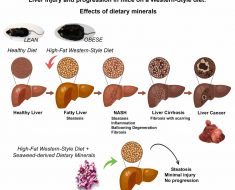
We use your sign-up to provide content in ways you’ve consented to and to improve our understanding of you. This may include adverts from us and 3rd parties based on our understanding. You can unsubscribe at any time. More info
And the pollution can increase the risk of health problems including heart disease, stroke, cancer and pneumonia, it warned. Modelling by the World Health Organisation (WHO) estimated that 99 percent of people breathe air that exceeds recommended annual average limits.
Measurements from 6,000 cities in 117 countries showed low and middle-income countries were worst affected by fine particulate matter, which can penetrate deep into the lungs, enter the bloodstream and damage organs.
There was less variation when it came to nitrogen dioxide – from fossil fuels such as through road traffic – with many cities in both higher and lower-income nations recording levels that increase risk of respiratory problems.
Dr Maria Neira, WHO director for the department of environment, climate change and health, said: “It is unacceptable to still have seven million preventable deaths and countless preventable lost years of good health due to air pollution.”
“Yet too many investments are still sunk into a polluted environment rather than in clean, healthy air.” The WHO’s data, released ahead of World Health Day on Thursday, involved a record number of cities – 2,000 more than during the last update in 2018.
In high-income countries, only 17 percent recorded levels of the miniscule inhalable particulate matter PM2.5 or PM10 that were below the WHO’s Air Quality Guidelines. In low and middle-income countries, the figure dropped to less than one percent.
Data from this city monitoring was combined with satellite data to model global exposure. This estimated that 99 percent of the global population was exposed to levels of PM2.5 exceeding the safe limit.
Speaking at a press conference, Dr Neira said: “We know now that those particles, particularly PM2.5, are so small they will cross our respiratory system and go into the bloodstream.”
“From there they can cause cardiovascular diseases, particularly heart diseases caused by oxygen restriction, or go to our brains and cause strokes.”
“And we have mounting evidence about damage they can do to our neurodevelopment and cognitive systems. Essentially, it can affect almost every organ in our body. We need to tackle the causes of air pollution, which are very much overlapping… with the causes of climate change.”
Around 4,000 cities in 74 countries also collected data on nitrogen dioxide for the first time. It is most common in urban areas.
Measurements showed only 23 percent of people in those locations were breathing concentrations below the recommended thresholds.
The WHO called for more intense action to improve air quality, such as support for clean sources of household energy and pedestrian and cyclist-friendly transport networks.
Dr Tedros Adhanom Ghebreyesus, WHO director-general, said: “High fossil fuel prices, energy security, and the urgency of addressing the twin health challenges of air pollution and climate change, underscore the pressing need to move faster towards a world that is much less dependent on fossil fuels.”
Source: Read Full Article





